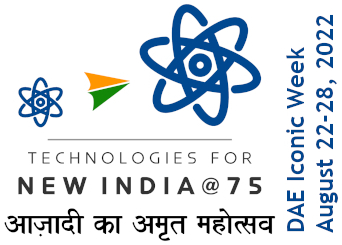Dark Matter Search Results from the PICO-2L C3 F8 Bubble Chamber
The PICO dark matter search collaboration, in which SINP is a participating institution, has recently published the first results of its search for Weakly Interacting Massive Particle (WIMP) candidates of Dark Matter. The paper is published in the journal Physical Review Letters 114, 231302 (2015) [doi: http://dx.doi.org/10.1103/PhysRevLett.114.231302] with Pijushpani Bhattacharjee, Mala Das and Susnata Seth (now at TIFR, Mumbai) of the Astroparticle Physics and Cosmology Division of SINP as participating authors from SINP.
Dark Matter (DM), the presence of which has long been inferred from astronomical observations, constitutes more than 80% of the gravitating matter content of the Universe. Yet it has so far eluded direct detection in any laboratory set up, primarily because it evidently has no direct electromagnetic interaction and thus emits no detectable electromagnetic radiation. Currently, WIMPs, with mass (times c2) anywhere in the range of a few GeV to several TeV as predicted in many models of new physics beyond the Standard Model of particle physics, are one of the most favored candidates for the constituents of the DM. Direct detection of WIMP candidates of DM is one of the most challenging goals of contemporary physics. Several experiments worldwide are engaged in attempts to directly detect these WIMPs by observing the effects of the scattering of WIMPs off nuclei of suitably chosen detector materials. In effect, these experiments attempt to measure the energy deposited by recoiling nuclei (due to scattering of WIMPs) in the detector medium. The recoil energy can be in the range of a few keV to few hundred keV depending on the WIMP and target nucleus mass. The deposited energy can be manifested as signals in the form of ionization, phonons, scintillation and so on. Because the expected event rates are very low, these experiments have to be performed in deep underground laboratories to shield them from the large background of cosmic ray induced particles and various sources of radioactivity.
The PICO experiment, formed from the merger of the PICASSO (Project in Canada to Search for Supersymmetric Objects) and COUPP (Chicagoland Observatory for Underground Particle Physics) experiments, and located in the SNOLAB underground laboratory (at about 2 km
depth) near Sudbury, Ontario, Canada, searches for WIMPs using a bubble chamber detector with superheated Octafluoropropane (C3F8), a refrigerant liquid, as the detector material. The choice of fluorine as a component of the detector liquid makes this kind of detector specially sensitive to the so-called spin-dependent (SD) interaction of the WIMPs with nuclei, although there is some sensitivity --- albeit to a lower degree --- to the spin-independent (SI) coherent
interaction of WIMPs with nuclei as well.
The broad working principle of the bubble chamber detector is as follows: A WIMP-nucleus elastic scattering event during the passage of the WIMP through the detector liquid would leave behind a recoiling nucleus (carbon or fluorine in the present case). The recoiling nucleus will lose its kinetic energy as it moves through the liquid. If the energy deposited in the liquid by the recoiling nucleus within a certain critical sized volume is above a certain threshold energy, then
a phase transition occurs whereby a bubble containing the vapour phase of the liquid forms. This bubble nucleation process is accompanied by formation of an acoustic wave pulse which can be detected by a set of suitably placed acoustic transducers. The critical bubble size and the threshold energy for bubble nucleation depend on the pressure and temperature of the superheated liquid. Thus, by suitably choosing the temperature and/or pressure, the bubble chamber can be made insensitive to minimum ionizing backgrounds (primarily due to electron recoils from the abundant gamma-ray and beta-decay backgrounds) while retaining sensitivity to the nuclear recoils that would be characteristic of WIMP scattering. The main nuclear recoil background events come from neutrons and alpha particles due to ambient radioactivity, the identification and thereby rejection of which constitute one of the main challenges for the WIMP detection. A major advantage of the bubble chamber detector, as compared to other types of detectors currently being employed for WIMP DM search, is that it works at room temperature
without the need for a cryogenic setup.
The bubble chamber (called PICO-2L) deployed in the experiment consisted of a fused silica jar sealed to a flexible, stainless steel bellows, all immersed in a pressure vessel filled with hydraulic fluid. The jar was filled with ~ 2.90 kg (with an uncertainty of 0.01kg) of C3F8,
which is topped with a water buffer layer in order to isolate it from contact with any stainless steel surfaces or seals that can cause nucleation events due to impurities. A schematic of the chamber is shown in Figure 1. Three lead zirconate (PZT) acoustic transducers epoxied to the exterior of the fused-silica jar recorded the acoustic emissions from bubble nucleations. Two video graphics array resolution CCD cameras photographed the chamber at a rate of 100 frames per second. Stereo image data from the cameras were used to reconstruct the spatial coordinates of each bubble within the chamber.
The PICO-2L experiment has achieved an electron-recoil sensitivity of less than 3.5 × 10-10 and an alpha rejection factor of more than 98.2%. Analysis of the PICO-2L data for a total exposure of 211.5 kg-days below an energy threshold of 10 keV has found no nuclear recoil events unambiguously attributable to a WIMP signal, thus providing the most sensitive direct detection constraints on WIMP-proton SD scattering cross section to date, as shown in Figure 2.

Figure 1 : The 90% C.L. upper limit on the SD WIMP-proton cross section from PICO-2L is plotted in red, along with limits from COUPP (light blue region), PICASSO (dark blue), SIMPLE (green), XENON100 (orange), IceCube (dashed and solid pink), SuperK (dashed and solid black), CMS (dashed orange), and ATLAS (dashed purple). For the IceCube and SuperK results, the dashed lines assume annihilation to W pairs while the solid lines assume annihilation to b quarks. The CMS and ATLAS limits assume an effective field theory, valid for a heavy mediator. The purple region represents parameter space of the constrained minimal supersymmetric model.

Figure 2 : A schematic of the PICO-2L bubble chamber
Dark Matter (DM), the presence of which has long been inferred from astronomical observations, constitutes more than 80% of the gravitating matter content of the Universe. Yet it has so far eluded direct detection in any laboratory set up, primarily because it evidently has no direct electromagnetic interaction and thus emits no detectable electromagnetic radiation. Currently, WIMPs, with mass (times c2) anywhere in the range of a few GeV to several TeV as predicted in many models of new physics beyond the Standard Model of particle physics, are one of the most favored candidates for the constituents of the DM. Direct detection of WIMP candidates of DM is one of the most challenging goals of contemporary physics. Several experiments worldwide are engaged in attempts to directly detect these WIMPs by observing the effects of the scattering of WIMPs off nuclei of suitably chosen detector materials. In effect, these experiments attempt to measure the energy deposited by recoiling nuclei (due to scattering of WIMPs) in the detector medium. The recoil energy can be in the range of a few keV to few hundred keV depending on the WIMP and target nucleus mass. The deposited energy can be manifested as signals in the form of ionization, phonons, scintillation and so on. Because the expected event rates are very low, these experiments have to be performed in deep underground laboratories to shield them from the large background of cosmic ray induced particles and various sources of radioactivity.
The PICO experiment, formed from the merger of the PICASSO (Project in Canada to Search for Supersymmetric Objects) and COUPP (Chicagoland Observatory for Underground Particle Physics) experiments, and located in the SNOLAB underground laboratory (at about 2 km
depth) near Sudbury, Ontario, Canada, searches for WIMPs using a bubble chamber detector with superheated Octafluoropropane (C3F8), a refrigerant liquid, as the detector material. The choice of fluorine as a component of the detector liquid makes this kind of detector specially sensitive to the so-called spin-dependent (SD) interaction of the WIMPs with nuclei, although there is some sensitivity --- albeit to a lower degree --- to the spin-independent (SI) coherent
interaction of WIMPs with nuclei as well.
The broad working principle of the bubble chamber detector is as follows: A WIMP-nucleus elastic scattering event during the passage of the WIMP through the detector liquid would leave behind a recoiling nucleus (carbon or fluorine in the present case). The recoiling nucleus will lose its kinetic energy as it moves through the liquid. If the energy deposited in the liquid by the recoiling nucleus within a certain critical sized volume is above a certain threshold energy, then
a phase transition occurs whereby a bubble containing the vapour phase of the liquid forms. This bubble nucleation process is accompanied by formation of an acoustic wave pulse which can be detected by a set of suitably placed acoustic transducers. The critical bubble size and the threshold energy for bubble nucleation depend on the pressure and temperature of the superheated liquid. Thus, by suitably choosing the temperature and/or pressure, the bubble chamber can be made insensitive to minimum ionizing backgrounds (primarily due to electron recoils from the abundant gamma-ray and beta-decay backgrounds) while retaining sensitivity to the nuclear recoils that would be characteristic of WIMP scattering. The main nuclear recoil background events come from neutrons and alpha particles due to ambient radioactivity, the identification and thereby rejection of which constitute one of the main challenges for the WIMP detection. A major advantage of the bubble chamber detector, as compared to other types of detectors currently being employed for WIMP DM search, is that it works at room temperature
without the need for a cryogenic setup.
The bubble chamber (called PICO-2L) deployed in the experiment consisted of a fused silica jar sealed to a flexible, stainless steel bellows, all immersed in a pressure vessel filled with hydraulic fluid. The jar was filled with ~ 2.90 kg (with an uncertainty of 0.01kg) of C3F8,
which is topped with a water buffer layer in order to isolate it from contact with any stainless steel surfaces or seals that can cause nucleation events due to impurities. A schematic of the chamber is shown in Figure 1. Three lead zirconate (PZT) acoustic transducers epoxied to the exterior of the fused-silica jar recorded the acoustic emissions from bubble nucleations. Two video graphics array resolution CCD cameras photographed the chamber at a rate of 100 frames per second. Stereo image data from the cameras were used to reconstruct the spatial coordinates of each bubble within the chamber.
The PICO-2L experiment has achieved an electron-recoil sensitivity of less than 3.5 × 10-10 and an alpha rejection factor of more than 98.2%. Analysis of the PICO-2L data for a total exposure of 211.5 kg-days below an energy threshold of 10 keV has found no nuclear recoil events unambiguously attributable to a WIMP signal, thus providing the most sensitive direct detection constraints on WIMP-proton SD scattering cross section to date, as shown in Figure 2.

Figure 1 : The 90% C.L. upper limit on the SD WIMP-proton cross section from PICO-2L is plotted in red, along with limits from COUPP (light blue region), PICASSO (dark blue), SIMPLE (green), XENON100 (orange), IceCube (dashed and solid pink), SuperK (dashed and solid black), CMS (dashed orange), and ATLAS (dashed purple). For the IceCube and SuperK results, the dashed lines assume annihilation to W pairs while the solid lines assume annihilation to b quarks. The CMS and ATLAS limits assume an effective field theory, valid for a heavy mediator. The purple region represents parameter space of the constrained minimal supersymmetric model.

Figure 2 : A schematic of the PICO-2L bubble chamber




